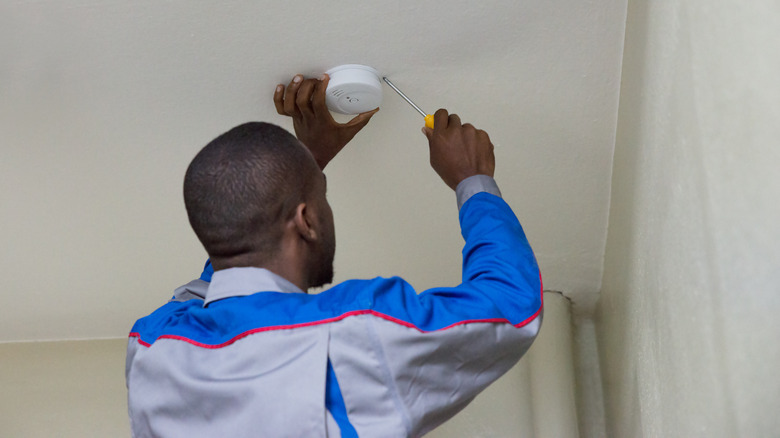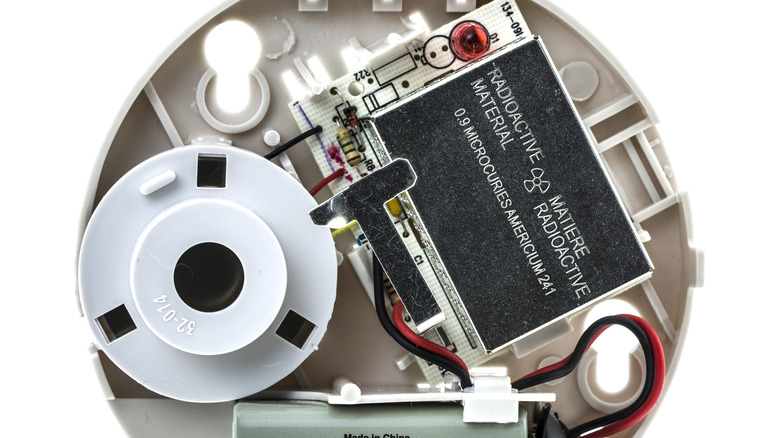Here's How Often You Should Replace Your Carbon Monoxide Detector
The scariest monsters are the ones you can't see coming; they're hidden, quiet, opportunistic, and sneaky. Carbon monoxide is one such monster, as the gas is invisible and deadly. Luckily, inexpensive carbon monoxide (CO) detectors can warn you of impending danger, but it's important to keep them in good working order and replace them at regular intervals.
The Seattle Times, citing the Centers for Disease Control and Prevention (CDC), reports that carbon monoxide kills hundreds of people in the United States every year. In addition, the CDC notes that unsuspecting individuals exposed to the gas account for more than 20,000 visits to the emergency room and 4,000 hospitalizations every year. Examining your CO detector consistently (especially if it's beckoning you with bleeps and blinks) is a good way to stop that monster from getting you. The lifespan of the device isn't endless, so the CDC also recommends taking the extra step of replacing old monitors every five years or so.
Understanding carbon monoxide detectors
Carbon monoxide detectors are the modern-day equivalent of a canary in a coal mine. Smithsonian Magazine tells the story of how the cheerful yellow birds warned miners of the danger from accumulating poisonous gasses, like carbon monoxide, that they couldn't see or smell. Today's CO detectors have their own chirps, and like their feathered predecessors, they don't live forever. Most experts recommend replacing the devices within five to seven years.
Carbon monoxide detectors are fairly simple in design, according to How Stuff Works. A microchip, some wires, LEDs, and a gas sensor (there are several types) are all it takes to keep you safe. They recommend checking with your municipality for any regulations regarding the type of CO detector you should install and then taking the proper steps to install it correctly and in the best location (often near bedrooms is a good start).
The devices are designed to go off before potential victims might feel the effects of carbon monoxide inhalation, which include headaches, dizziness, shortness of breath, and nausea. The Mayo Clinic cautions that the early symptoms may not be easy to attribute directly to CO poisoning. They recommend that if you suspect CO poisoning, get to an emergency facility for evaluation.
Final thoughts on carbon monoxide
Where you live can put you at greater peril for carbon monoxide poisoning. In general, people living in states in the Midwest and South are more likely to be victims of the deadly gas. SafeWise adds that cold-weather states like Wyoming and Alaska have the highest incidences of CO poisoning, and that the winter months pose the greatest danger. Urban dwellers and those between the ages of 44 and 64 also are at higher risk.
Prevention is an important part of avoiding the danger of carbon monoxide exposure. Review the CDC guidelines for protecting yourself from being a victim, including having your heating system checked regularly, getting your chimney cleaned, venting gas appliances correctly, and not using a generator indoors. Prevention is a good start, but don't stop there. Installing a carbon monoxide detector, checking its condition, and replacing it every five years can keep the monsters at bay and save your life and that of your loved ones.


